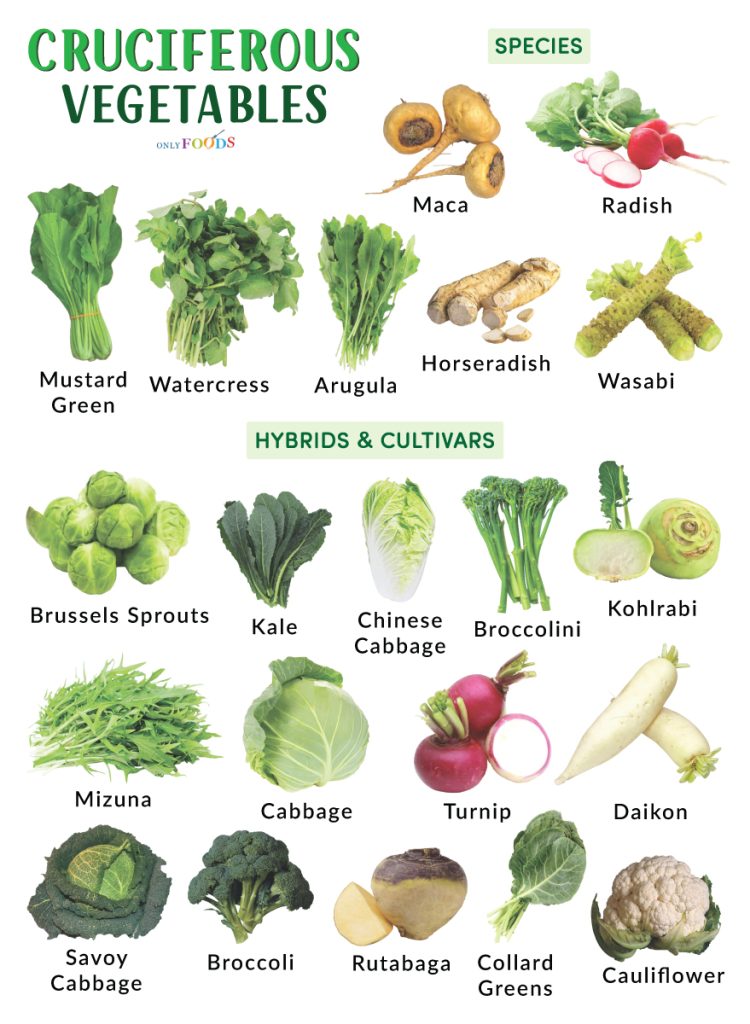Cruciferous Vegetables
Cruciferous vegetables are a diverse group of vegetables belonging to the family Brassicaceae, also called ‘Cruciferae.’ The second name refers to the distinct cross shape of the flowers of the plants in the family. That is the origin of the name ‘cruciferous’ for the group.
These vibrant and colorful vegetables can be a great addition to almost any dish, whether stir-fries and roasts or stews, salads, and casseroles. Additionally, they are counted among the healthiest vegetables, containing many essential nutrients and minerals, most notably being rich in vitamin C, soluble fibers, and sulfur. The characteristic pungent, sometimes bitter, flavor and taste of these vegetables come from the sulfur-containing compounds (glucosinolates) they have. Research also suggests they have cancer-preventive properties.
List of the Different Types of Cruciferous Vegetables
Like most other fruit and vegetable groups, the cruciferous group consists of both naturally occurring species as well as hybrids and cultivars.
Naturally Occurring Species
- Radish
- Horseradish
- Wasabi
- Arugula (Rocket)
- Land Cress
- Watercress
- Ethiopian Mustard
- Mustard Greens
- Wild Arugula
- Tatsoi
- Maca
- Garden Cress
- Field Pepperweed
Hybrids and Cultivars
- Cabbage
- Broccoli
- Cauliflower
- Chinese Cabbage (Bok Choy)
- Collard Greens
- Brussels Sprouts
- Kale
- Savoy Cabbage
- Kohlrabi
- Daikon
- Chinese Broccoli (Gai-lan)
- Broccolini
- Turnip
- Chinese Cabbage (Napa Cabbage)
- Mizuna
- Siberian Kale
- Wild Broccoli
- Rutabaga (Swede)
- Broccoflower
- Rapini (Broccoli Rabe)
- Choy Sum (Flowering Cabbage)
- Canola (Rapeseed)
- Wrapped Heart Mustard Cabbage
- Broccoli Romanesco
- Komatsuna
Almost all the best-known cruciferous vegetables, including broccoli, cabbage, cauliflower, kale, Brussels sprouts, and kohlrabi, come from a single species, Brassica oleracea, in the Brassicaceae family. Together, these vegetables are referred to as cole crops or brassicas.
Despite their rich nutrient contents, cruciferous vegetables can be difficult to digest for some individuals, especially if eaten raw. It is due to the indigestible sugars they contain. Usually, cooking is believed to make them easier to digest.

